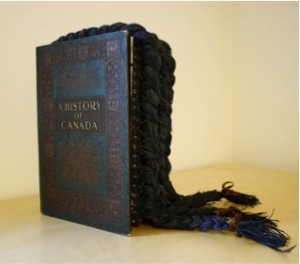
Reflections on Curating Black Canadian History and Culture
On October 26th and 27th, CEREV convened a workshop called Curating Black Canadian History and Culture. As organizer, I was privileged to be in the company of many of my intellectual heroes, known for their work as pubic scholars, educators, critics, and curators.
The first day’s session was organized under the banner, “Taking Stock: Curating Black Canadian History and Culture.” Twelve presenters spoke about key curatorial issues related to Canadian black history and culture. A prominent theme across institutions and time was that of mainstream Canada’s amnesia – and its resistance to knowledge – regarding slavery and its legacies. Institutional inertia is revealed when museums and heritage sites cling to the uplifting narrative of the Underground Railway that conveniently positions Canada as morally superior to the United States. It is also expressed when sites endowed with feelings of national pride and nostalgia – such as Fortress Louisbourg in Cape Breton – struggle to incorporate difficult histories. Current institutional budget cutbacks make matters worse. Librarians with deep knowledge of archives are a disappearing breed as systems become digitized while long front-line careers end without positions being replaced. This loss of knowledge and connection to the archives forms a barrier that persistent researchers must contend with; there is much “mining the museum” to be done in Canadian institutions. Presenters also commented on progress in the field, such as Buxton National Historic Site and Museum’s emerging role as an educator of non-black students on day trips from Toronto, the American recession having lessened the traditional American visitor base. And while the site commemorates the Underground Railway and a remarkable community that emerged from that diaspora, it also re-educates visitors, adding nuance to the freedom narrative.
Art gallery practices, such as renaming historical artwork to remove racist language, also create historical erasures. Close to home, the canonical artist Francois Malepart de Beaucourt’s “Portrait of a Haitian Woman” is on display in the Montreal Museum of Fine Art’s Pavillion of Quebecois and Canadian Art with no commentary on the titles it is known by (“Portrait of a Negro Slave” and “Negress”), nor on the painting’s context of Empire and slavery. Unreflexive institutional practices reproduce erasures, such as when a Quebec virtual heritage project excludes Nigger Rock from its exhibition due to an inflexible rule that the site is not easily accessible. The absurdity of this is compounded by the fact that the organization professes an interest in inclusiveness and bothered to consult with local experts. The effects of these erasures are real and most notably felt while fielding an everyday question – “Where are you from?” Often framed by an implicit assumption that visible minorities must be “new” Canadians, the question reveals ignorance of the diversity and equality struggles that inform Canadian history. It also unsettles feelings of national belonging.
Presenters debated whether mainstream museums could be a source of cultural and/or economic empowerment for black Canadians. For some, only art galleries – or art interventions in historical museums – offer liberatory possibilities. Similarly, the group explored using research and curatorial strategies in public spaces such as universities and city halls to co-create (with students, for example) exhibits related to slavery and racism.
This “constructive” orientation resonated with day two of the workshop, titled “Curatorial Dreaming at the Royal Ontario Museum.” For this, participants commented upon a draft of my proposed curatorial intervention in the African and Canadian galleries at the ROM in Toronto. I am in the process of translating the rich discussion and incredible feedback that ensued into my contribution for the volume, Curatorial Dreams: Critics Imagine Exhibitions (Butler and Lehrer, eds). Picking up on themes from the previous day, the discussion delved into fundamental questions, about relationships between curatorial interventions and real institutional change. At the same time, participants responded to the proposal’s specifics – a title that may not resonate, possibilities of incorporating new technologies, the lingering need for healing at the Royal Ontario Museum decades after “Into the Heart of Africa.” My present challenge is how to feature feedback and suggestions in a textually interesting way that doesn’t relegate it to endnotes. It is a writing strategy that I am working on to honour the generous work of participants in this workshop and to foreshadow the vision of a “curatorial collective” at the ROM.
Post by: Shelley Ruth Butler
This video is only available for viewing when using the Safari browser. To download Safari, follow this link.
Here is short video montage of presenters at “Taking Stock: Curating Black Canadian History and Culture.” CEREV apologizes for its poor quality due to technical difficulties. After consulting with participants, it was decided that the video is worth posting as a record despite its aesthetic shortcomings.



